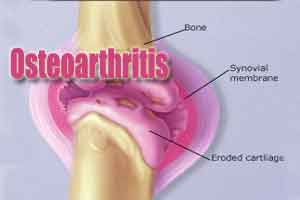- Home
- Editorial
- News
- Practice Guidelines
- Anesthesiology Guidelines
- Cancer Guidelines
- Cardiac Sciences Guidelines
- Critical Care Guidelines
- Dentistry Guidelines
- Dermatology Guidelines
- Diabetes and Endo Guidelines
- Diagnostics Guidelines
- ENT Guidelines
- Featured Practice Guidelines
- Gastroenterology Guidelines
- Geriatrics Guidelines
- Medicine Guidelines
- Nephrology Guidelines
- Neurosciences Guidelines
- Obs and Gynae Guidelines
- Ophthalmology Guidelines
- Orthopaedics Guidelines
- Paediatrics Guidelines
- Psychiatry Guidelines
- Pulmonology Guidelines
- Radiology Guidelines
- Surgery Guidelines
- Urology Guidelines
Osteoarthritis is more than wear and tear: Study

Knee osteoarthritis is a highly prevalent, disabling joint disease which has more than doubled in prevalence since the mid-20th century .The etiology of knee osteoarthritis, although commonly attributed to aging and obesity which is not correct in entirety as this assumption has not been tested using long-term historical or evolutionary data.
In the present study Ian J. Wallace et.al analyzed long-term trends in knee OA prevalence in the United States using cadaver-derived skeletons of people aged ≥50 y whose BMI at death was documented and who lived during the early industrial era (1800s to early 1900s; n = 1,581) and the modern postindustrial era (late 1900s to early 2000s; n= 819). Knee OA among individuals estimated to be ≥50 y old was also assessed in archeologically derived skeletons of prehistoric hunter-gatherers and early farmers (6000–300 B.P.; n = 176). OA was diagnosed based on the presence of eburnation (polish from bone-on-bone contact). Overall, knee OA prevalence was found to be 16% among the postindustrial sample but only 6% and 8% among the early industrial and prehistoric samples, respectively. After controlling for age, BMI, and other variables, knee OA prevalence was 2.1-fold higher (95% confidence interval, 1.5–3.1) in the postindustrial sample than in the early industrial sample. The salient findings are hereunder-
1) The prevalence of knee osteoarthritis was 16% in the postindustrial sample, but only 6% and 8% in the early industrial and prehistoric samples, respectively
2)he prevalence was 2.1-fold higher in the postindustrial sample than in the early industrial sample after the investigators controlled for age, BMI, and other variables
3)Females were more affected than males. After controlling for sex, knee osteoarthritis prevalence in the postindustrial sample was 2.6 and two times higher than in the early industrial and prehistoric samples, respectively.
4)Among postindustrial persons with knee osteoarthritis, 42% had the disease in both knees, which was a 2.5- and 1.4-fold higher proportion than in the prehistoric and early industrial samples, respectively.
The researchers characterized knee osteoarthritis as a condition that from an evolutionary perspective fits the criteria of a "mismatch disease" i.e., one that is more prevalent or severe because bodies are inadequately or imperfectly adapted to modern environments.
Therefore they concluded that the results indicate that increases in longevity and BMI are insufficient to explain the approximate doubling of knee OA prevalence that has occurred in the United States since the mid-20th century. Knee OA is thus more preventable than is commonly assumed, but prevention will require research on additional independent risk factors that either arose or have become amplified in the postindustrial era.The prevention strategy will involve adjusting physical activity patterns and diets to approximate more closely the lifestyle conditions under which our species evolved.

Disclaimer: This site is primarily intended for healthcare professionals. Any content/information on this website does not replace the advice of medical and/or health professionals and should not be construed as medical/diagnostic advice/endorsement or prescription. Use of this site is subject to our terms of use, privacy policy, advertisement policy. © 2020 Minerva Medical Treatment Pvt Ltd